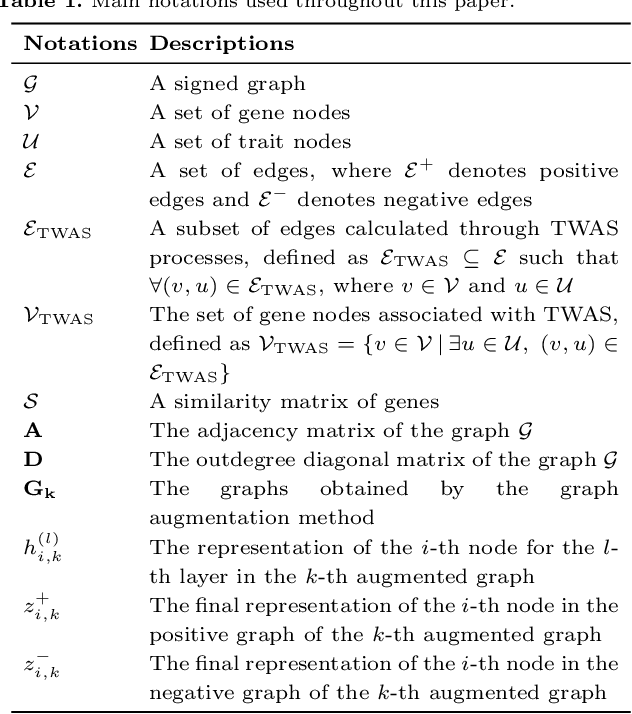CSGDN: Contrastive Signed Graph Diffusion Network for Predicting Crop Gene-Trait Associations
Paper and Code
Oct 10, 2024



Positive and negative association preidiction between gene and trait help studies for crops to perform complex physiological functions. The transcription and regulation activity of specific genes will be adjusted accordingly in different cell types, developmental stages, and physiological states to meet the needs of organisms. Determing gene-trait associations can resolve the mechanism of trait formation and benefit the improvement of crop yield and quality. There are the following two problems in obtaining the positive/negative associations between gene and trait: 1) High-throughput DNA/RNA sequencing and trait data collection are expensive and time-consuming due to the need to process large sample sizes; 2) experiments introduce both random and systematic errors, and, at the same time, calculations or predictions using software or models may produce noise. To address these two issues, we propose a Contrastive Signed Graph Diffusion Network, CSGDN, to learn robust node representations with fewer training samples to achieve higher link prediction accuracy. CSGDN employs a signed graph diffusion method to uncover the underlying regulatory associations between genes and traits. Then, stochastic perterbation strategies are used to create two views for both original and diffusive graphs. At last, a multi-view contrastive learning paradigm loss is designed to unify the node presentations learned from the two views to resist interference and reduce noise. We conduct experiments to validate the performance of CSGDN on three crop datasets: Gossypium hirsutum, Brassica napus, and Triticum turgidum. The results demonstrate that the proposed model outperforms state-of-the-art methods by up to 9.28% AUC for link sign prediction in G. hirsutum dataset.
 Add to Chrome
Add to Chrome Add to Firefox
Add to Firefox Add to Edge
Add to Edge